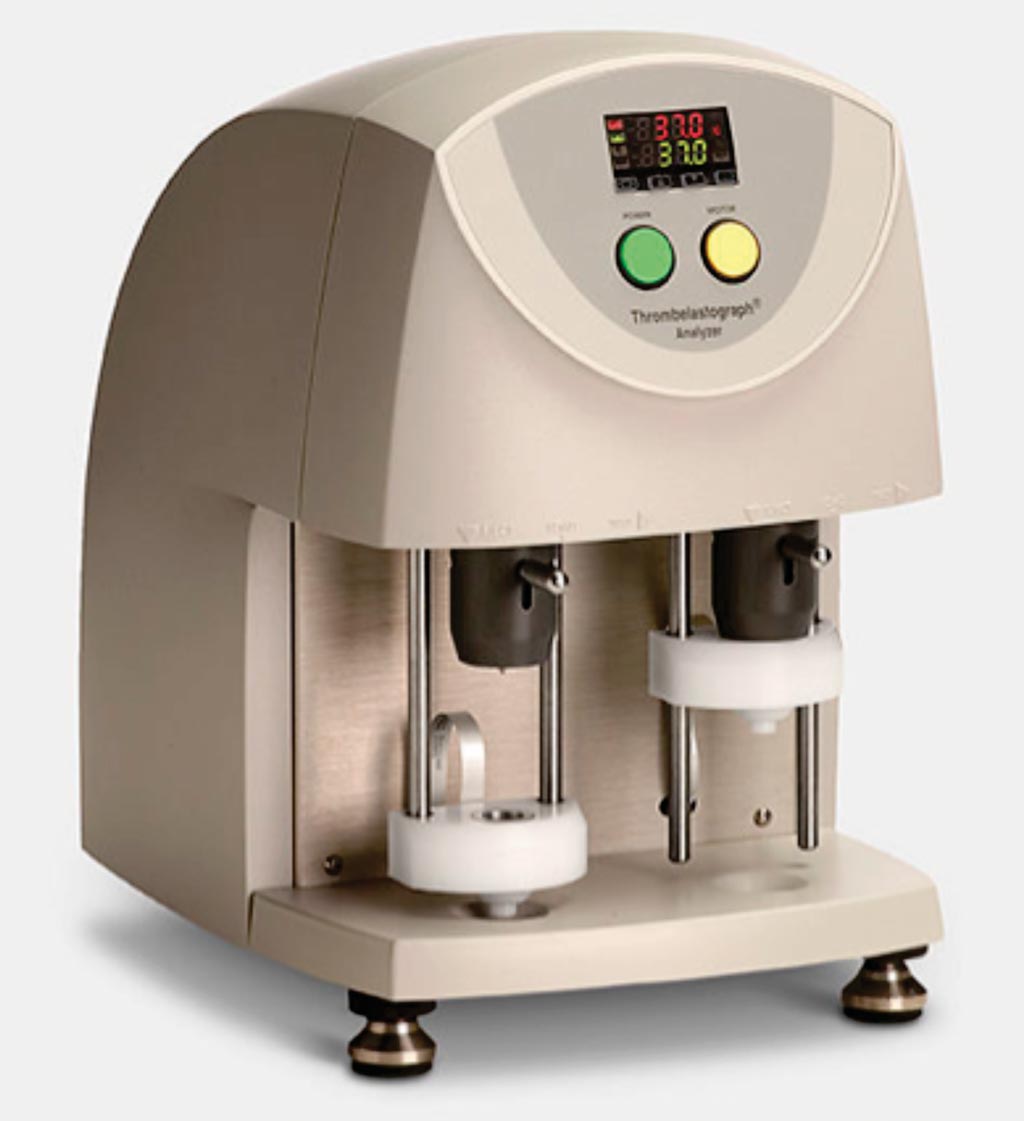Biomarker Predicts Factor VIII Response in Hemophilia A
By LabMedica International staff writers
Posted on 10 Apr 2019
Hemophilia A is a genetic deficiency in clotting factor VIII (FVIII), which causes increased bleeding and usually affects males. In the majority of cases it is inherited as an X-linked recessive trait, though there are cases, which arise from spontaneous mutations.Posted on 10 Apr 2019
Trough factor (F) VIII level is a not reliable bleeding risk indicator to predict prophylaxis efficacy in severe hemophilia A (SHA), therefore, accurate biomarkers are in great demand by specialist hematologists. Thrombelastography (TEG) monitors both thrombin and clot formation addressing the global hemostatic status but its usefulness to tailor prophylaxis in hemophilia has been poorly evaluated.

Image: The TEG 5000 Thrombelastograph Hemostasis Analyzer System is utilized to help assess bleeding and thrombotic risks, and to monitor antithrombotic therapies (Photo courtesy of Haemonetics).
Hematologists at the La Paz University Hospital (Madrid, Spain) analyzed a group of 19 adolescents (younger than 18 years) with severe hemophilia A (without signs of inhibitors) on long-term preventive treatment with FVIII. Of the 19 patients, six had at least one spontaneous bleeding event that required treatment in the two years preceding the study and were categorized as “bleeders.” The remaining patients were categorized as non-bleeders.
Whole blood was withdrawn before FVIII administration and at five time-points after infusion for the thrombelastography test to assess the therapy’s pharmacodynamics (what a medicine does to the body) and pharmacokinetics (what the body does to a medicine, referring to the movement of the therapy through the body) profiles. The team hypothesized that the outcomes of the laboratory test may help discern patients who exhibit a bleeding tendency from those who do not. Ten patients completed the five post-infusion time-points, while five patients missed one time-point, and four missed two time-points.
The investigators reported that the thrombelastography (TEG) analysis over time showed that the procoagulation activity of patients decreased with time after dosing with FVIII. The therapy’s effectiveness tended to be weaker in the group of bleeders compared to the non-bleeders, although the team saw no significant statistical difference. Moreover, the “half maximal effective concentration” of FVIII (FVIII-EC50), a parameter that describes the concentration at which a therapy induces a response halfway between no response and maximum response, assessed in the TEG test was significantly higher in bleeders, which suggests a poorer response to FVIII.
The authors concluded that overall, their findings support the FVIII-EC50 for the first time as a valuable biomarker to anticipate individual efficacy of prophylaxis in severe hemophilia A. Only the half maximal effective concentration of FVIII (FVIII-EC50) for TEG parameters R-time, K-time and α-angle correlated with the bleeding phenotype being significantly higher in bleeders suggestive of a poorer response to FVIII. The study was published on February 1, 2019, in the European Journal of Pharmaceutical Sciences.
Related Links:
La Paz University Hospital













